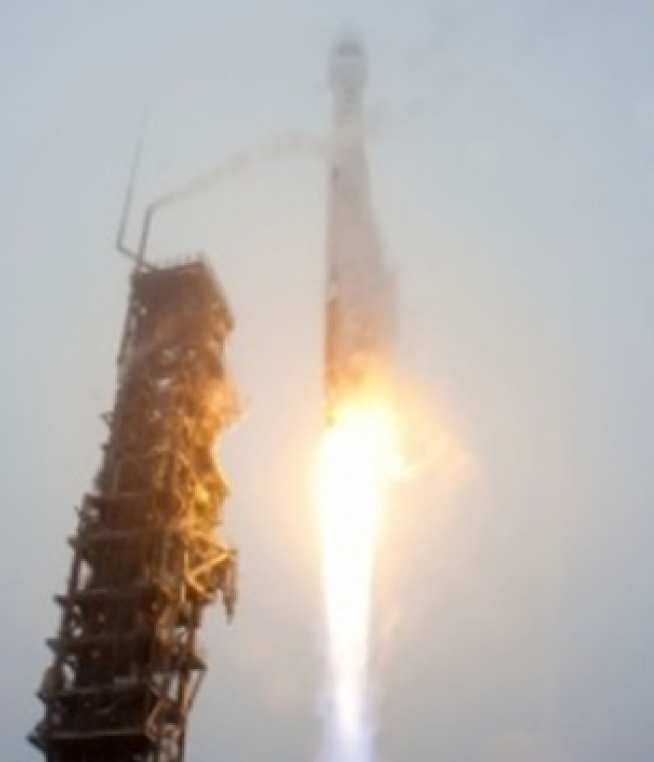
The TRIO-CINEMA mission is a collaboration between three institutions: Space Sciences Laboratory (SSL) of the University of California Berkeley; School of Space Research at Kyung Hee University (KHU), South Korea; and the Space and Atmospheric Physics Group of Imperial College London.
CINEMA (Cubesat for Ions, Neutrals, Electrons and MAgnetic fields) and TRIO are CubeSat spacecraft to study Space Weather by making measurements of the magnetic field and energetic ions and electrons in near-Earth space, as well as imaging ring current particles.
Imperial College's Space Magnometer Laboratory is providing the magnetometer sensor (MAGIC) for the CINEMA and TRIO spacecraft.
For further information please see:
Further Info
CINEMA launch on an Atlas V in September 2012. Image credit: United Launch Alliance
CINEMA and TRIO are four identical 3U CubeSats, with a 10x10x30cm form factor. SSL has built CINEMA and will build a fourth spacecraft; KHU is building two TRIO spacecraft to the same design. All four will carry the STEIN and MAGIC instruments; Imperial College London is building the MAGIC instrument for every spacecraft.
Launches will be piggy-backs on other missions, as is usual for CubeSats. CINEMA launched in September 2012 on an Atlas V from Vandenberg Air Force Base, California.
Communications will be via S-band, allowing high data rates.
SSL was awarded $890,000 by the US National Science Foundation on the 30th of August 2009 to fund CINEMA. Kyung Hee University has received funding from the Korean government through its “World Class University” programme to support TRIO, among other proj ects.
Development of the magnetoresistive MAGIC sensors has been supported by the UK Science and Technology Facilities Council.
Construction and delivery of the three flight MAGIC units has been achieved using a mixture of funds from the ESA GSTP and Technology Transfer schemes as well as some in-kind internal funding.
- Mission profile: 4 identical nano-satellites studying Space Weather effects in near-Earth space
- Science topics: Image ring current particles to study magnetic storms; measure high latitude ion precipitation; detect electron microbursts; measure small-scale magnetospheric waves and flux transfer events; multi-point measurements
- Institutions: Space Science Laboratory, U. California Berkeley; School of Space Research, Kyung Hee University, South Korea; Space and Atmospheric Physics Group, Imperial College London
- Instruments: MAGIC (Magnetometer from Imperial College); STEIN (Suprathermal Electrons, Ions and Neutrals)
- Communications: S-band high data rate downlink
- Attitude control: Spin-stabilised, 4 rpm
- Orbit: Low Earth Orbit (LEO, around 600km), high inclination
- Launch date: CINEMA: 13 September 2012, TRIO 2 and 3: November 2014; CINEMA 4: mid-2014